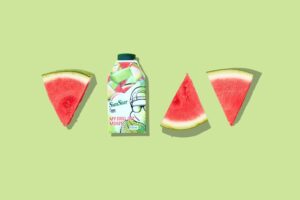Welcome to the ultimate duel in the digital realm: Lightroom vs. Photoshop. These two Adobe titans have been the go-to tools for photographers, designers, and artists. But which one is right for you? In this blog, we’ll dissect their features, strengths, and best use cases, guiding you through the dynamic world of image enhancement and manipulation. Whether you’re just starting or a seasoned pro, let’s find the perfect tool for your digital artistry journey.


1. What’s the primary purpose of Lightroom and Photoshop?
Lightroom is primarily designed for photo organization, enhancement, and management. It serves as a comprehensive tool for photographers to streamline their workflow, from importing and organizing images to applying adjustments and exporting them in various formats.
In contrast, Adobe Photoshop is a pixel-level editor known for its extensive retouching and manipulation capabilities. While Lightroom focuses on global adjustments and organization, Photoshop dives into the nitty-gritty details of image editing and creation.
In summary, while Lightroom and Photoshop are both essential tools in a photographer’s toolkit, they serve different primary purposes. Lightroom is ideal for managing, enhancing, and streamlining the editing process for your photos, while Photoshop is the ultimate powerhouse for advanced retouching, creative manipulation, and pixel-level control. The choice between the two depends on your specific editing needs and preferences.
2. Can we use both Lightroom and Photoshop together?
Certainly! Combining the power of Lightroom and Photoshop in your photo editing workflow is a smart strategy. Begin in Lightroom for organization, basic edits, and global adjustments. This initial phase ensures your images are well-managed and prepped. Then, seamlessly transition to Photoshop when you need to dive into advanced retouching, pixel-level control, or creative manipulation. Photoshop’s extensive toolset enables you to tackle complex tasks such as detailed retouching, compositing, and graphic design. After you’ve perfected your image in Photoshop, it effortlessly returns to your Lightroom catalog for final organization and export. This collaborative approach leverages the strengths of each software, allowing you to create stunning, polished images efficiently.
3. Which one is more user-friendly for beginners?
When comparing Lightroom and Photoshop in terms of user-friendliness for beginners, Lightroom emerges as the preferred choice due to its intuitive and streamlined interface. Lightroom’s user-centric design focuses on photo organization and enhancement, providing a straightforward and approachable platform for newcomers. With its simple learning curve, beginners can quickly grasp the essential tools and techniques needed to enhance their photos.
4. What are the projects for use in Lightroom or Photoshop?
Lightroom is excellent for streamlining wedding, portrait, or event photography workflows. In contrast, Photoshop is often preferred for more creative projects, such as digital art, high-end retouching and graphic design.
5. What about mobile editing?
Both Lightroom and Photoshop offer mobile apps. Lightroom Mobile focuses on on-the-go editing and synchronization with your desktop catalog, while Photoshop for iPad allows for advanced editing on tablets.
6. What are the hardware requirements for Lightroom and Photoshop?
Understanding the system requirements for each software is crucial. Lightroom typically has more modest requirements, while Photoshop’s extensive capabilities may demand a more powerful computer.
7. Are there any alternatives to Lightroom and Photoshop?
While Lightroom and Photoshop are industry standards, there are alternative photo editing software options available. Exploring these alternatives might be beneficial depending on your needs and budget.
Capture One: Capture One is a robust competitor to Lightroom, favored by many professional photographers for its powerful RAW processing capabilities and tethering options. It offers advanced color grading tools and efficient photo organization features.
GIMP (GNU Image Manipulation Program): GIMP is a free, open-source alternative to Photoshop. It provides many of the same advanced editing features, making it an excellent choice for those on a tight budget. It’s available for Windows, macOS, and Linux.
Affinity Photo: Affinity Photo is a cost-effective alternative to both Lightroom and Photoshop. It combines photo editing and design tools, offering a non-destructive editing workflow, RAW processing, and powerful retouching capabilities.
DXO PhotoLab: DXO PhotoLab focuses on enhancing image quality and offers intelligent automatic adjustments. It’s known for its excellent noise reduction and lens correction features, making it a favorite for photographers concerned with image quality.
Luminar: Luminar is known for its AI-powered editing features, making it a great choice for those who want to quickly enhance their photos. It offers a variety of creative filters and looks for easy and creative edits.
Rapid Round
1. What about non-destructive editing?
Lightroom is the champion of non-destructive editing, preserving your original photo while making changes.
2. Are there any advantages to using Photoshop over Lightroom?
Photoshop’s pixel-level control allows for more extensive retouching, compositing, and creating complex graphics.
3. Can Lightroom handle RAW files?
Lightroom excels at handling RAW files, providing powerful tools for RAW conversion, while Photoshop also supports RAW files through it’s CameraRaw editor but if you want to do any complex editing it will have to convert the photo into JPG.
4. How about preset and batch editing?
Lightroom shines in this department, making it easy to apply presets and edit multiple photos at once.
5. What’s the pricing difference?
Lightroom offers a more affordable subscription, making it a budget-friendly choice.
6. And for creative design?
Photoshop is unbeatable for graphic design, text, complex compositions, and intricate retouching.
So, which one should I choose?
It ultimately depends on your editing needs. Lightroom is perfect for photographers who want efficient organization and edit large number of photos, while Photoshop is the go-to for intricate retouching and creative manipulation.
In the battle of Lightroom vs. Photoshop, there’s no one-size-fits-all answer. Your choice depends on your editing style and goals. Whether you choose Lightroom’s simplicity or Photoshop’s versatility, your photographic journey is sure to be magical!


If you need to read more about the Lightroom and Photoshop comparison, click here.
In the end, whether you choose Lightroom, Photoshop, or a combination of both, remember that these tools are here to empower your creativity. The art of image editing is a personal journey, and your choice should align with your unique style and goals. So, go forth, explore, and let your imagination run wild. Embrace the pixels, embrace the presets, and most importantly, embrace your creative vision.






